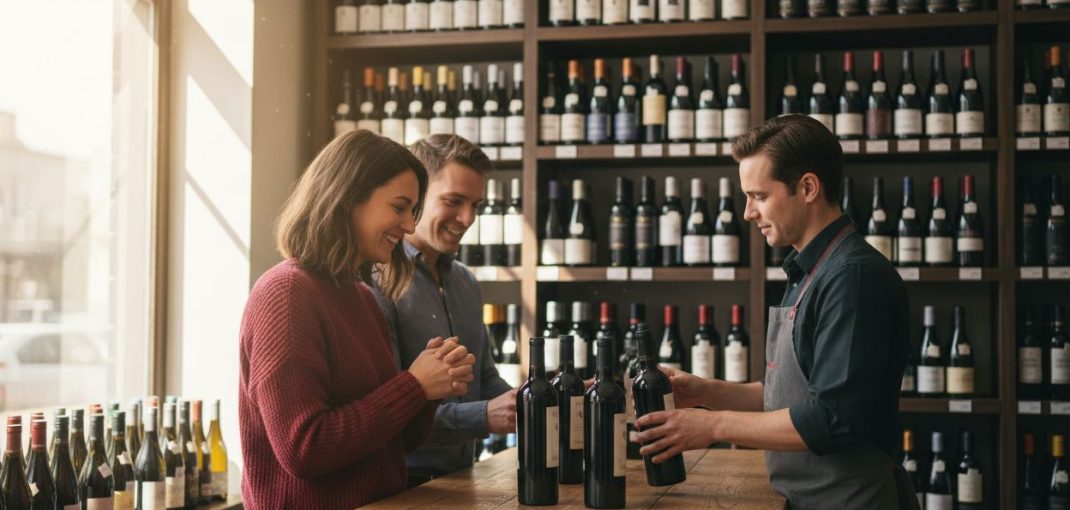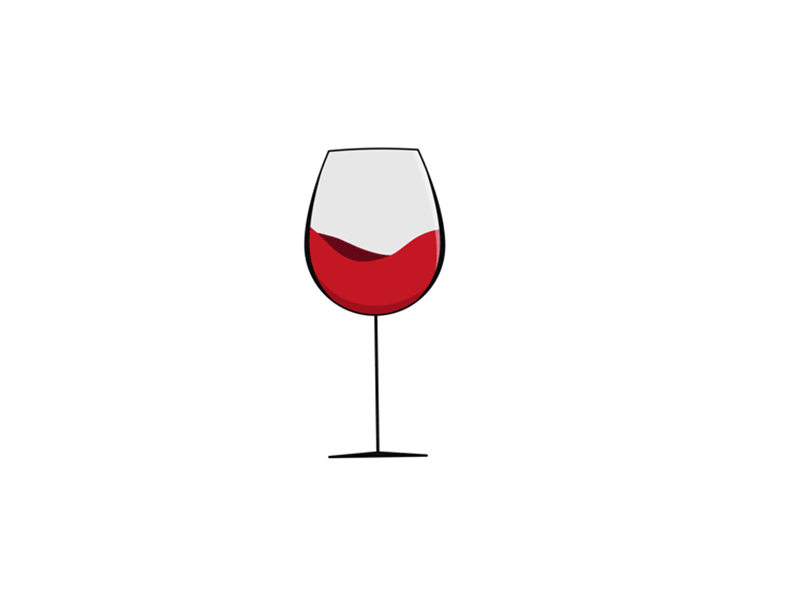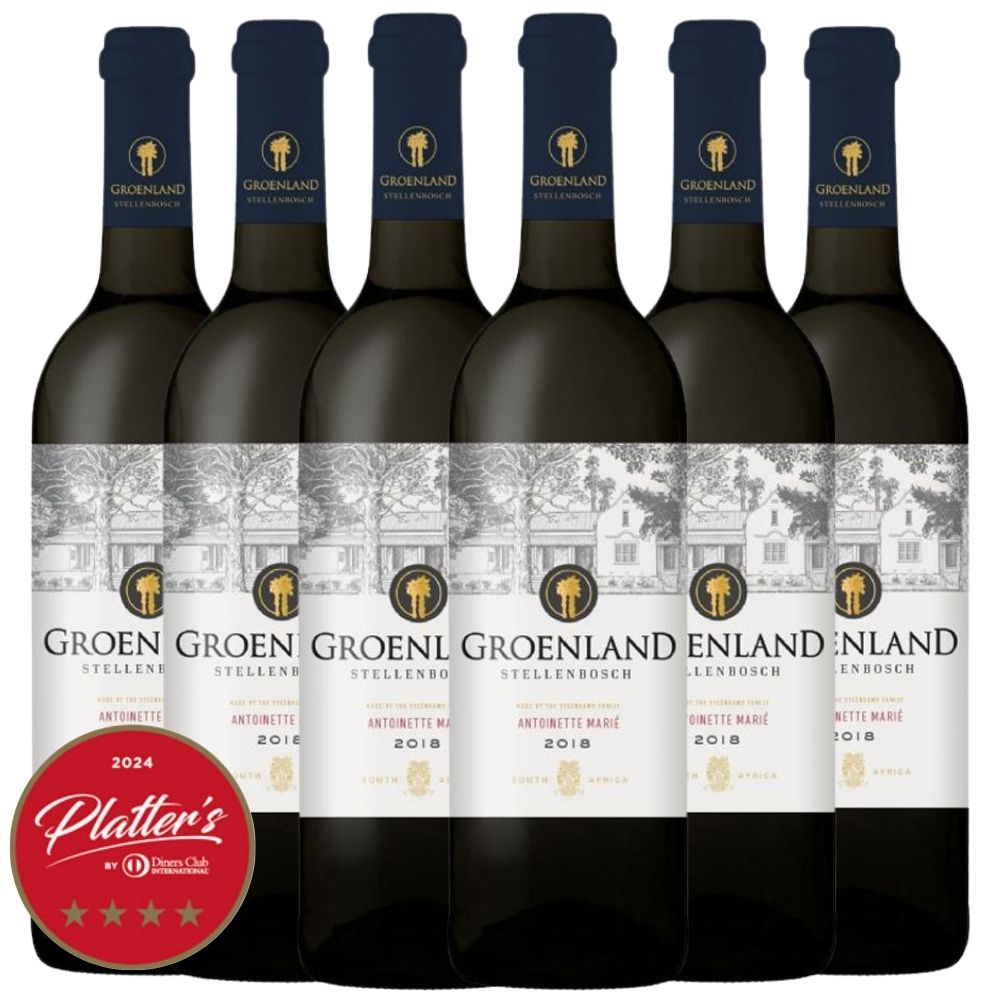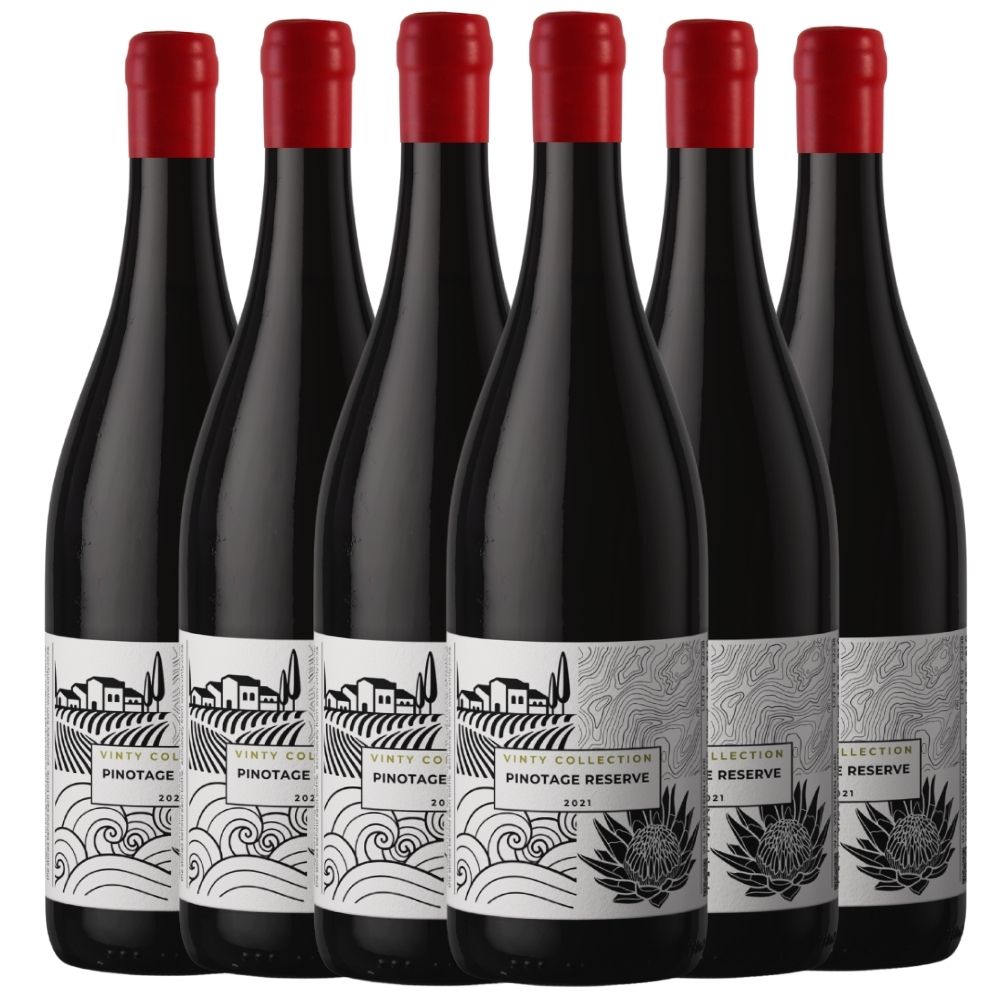Wine debates always get heated as everyone claims to know what makes a bottle truly special. Some folks spend thousands, hunting down rare vintages, convinced that only the priciest wines are worthwhile. Yet the real shock is that
affordable wines can deliver exceptional taste experiences and actually rival many big names. Turns out, a great wine is less about the price tag and more about hidden qualities you probably never even considered.
Table of Contents
Quick Summary
| Takeaway |
Explanation |
| Balance is key in wine |
A great wine achieves harmony between acidity, alcohol, tannins, and sweetness, creating a smooth experience. |
| Complexity enhances enjoyment |
Exceptional wines reveal multiple aromas and flavours, evolving with each sip, offering a richer tasting experience. |
| Terroir influences flavour significantly |
Geography, climate, and soil interact to impart unique characteristics to the wine, differentiating each bottle. |
| Small-batch wines focus on quality |
Limited production allows for careful craftsmanship and attention to detail, resulting in outstanding wines with a story. |
| Wine value is not tied to price |
Affordable wines can provide exceptional quality; understanding what contributes to value is crucial for selection. |
What Makes a Great Wine? Key Characteristics Explained
Understanding what transforms a simple beverage into an extraordinary wine requires insight into several nuanced characteristics. While personal taste plays a significant role, wine experts agree that exceptional wines share specific fundamental qualities that elevate them beyond ordinary drinks.
Learn how to spot quality wines with this comprehensive guide to wine appreciation.
Balance: The Harmony of Elements
Wine balance represents the delicate interaction between key components like acidity, alcohol, tannins, and sweetness. A truly great wine maintains perfect equilibrium where no single element dominates the others. Imagine a sophisticated orchestra where each instrument plays its part without overpowering the entire composition. When these elements harmonise seamlessly, the result is a wine that feels smooth, integrated, and complex.
Complexity: Layers of Sensory Experience
Complex wines offer an evolving sensory journey. They reveal different aromas and flavours with each sip, challenging and delighting the palate. Unlike straightforward wines that present a single, predictable taste profile, complex wines unfold gradually. Initial notes might hint at dark fruits, which then transition into subtle spice or mineral undertones. These multilayered experiences distinguish exceptional wines from average ones.
Great wines possess not just immediate drinking pleasure but also the potential to age gracefully. This characteristic depends on several factors including tannin content, acidity, and overall balance. Wines with robust structure can develop more nuanced flavours over time, transforming from their initial state into something even more remarkable.
Below is a table outlining the core characteristics that define a great wine, offering a concise comparison of their roles in creating memorable tasting experiences.
| Characteristic |
What It Means |
Why It Matters |
| Balance |
Harmony between acidity, alcohol, tannins, and sweetness |
Ensures a smooth, integrated wine-drinking experience |
| Complexity |
Multiple evolving aromas and flavours |
Delivers a richer and more engaging tasting journey |
| Structure |
Elements like tannins and acidity for longevity |
Indicates potential for ageing and flavour development |
| Immediate Pleasure |
Pleasant taste upon release |
Provides enjoyment even without cellaring |
| Ageing Potential |
Ability to improve over time |
Offers evolving, nuanced characteristics with patience |
| While not every wine is meant for long-term cellaring, those with exceptional structure promise an evolving drinking experience that rewards patience and careful preservation. |
|
|
The Importance of Terroir: How Environment Shapes Flavour
Terroir represents the magical intersection where geography, climate, and winemaking tradition converge to create distinctive wines. It explains why two vineyards growing the same grape variety can produce radically different wines.
Explore boutique wineries that showcase exceptional terroir characteristics in their unique productions.
Soil: The Foundation of Flavour
The geological composition of a vineyard dramatically influences wine character. Different soil types like limestone, granite, shale, or clay interact uniquely with vine roots, imparting subtle mineral nuances and structural complexity. Granite soils, for instance, often produce wines with crisp acidity and distinct stoniness, while clay-rich soils tend to yield wines with deeper, more rounded flavour profiles. These microscopic interactions between roots and earth create signature taste experiences that cannot be replicated elsewhere.
Climate: Nature’s Winemaking Palette
Climate determines the fundamental rhythm of grape ripening. Temperature, sunlight exposure, rainfall patterns, and seasonal variations all contribute to grape development. Cooler regions typically produce wines with higher acidity and more delicate flavour profiles, while warmer zones generate fuller-bodied wines with richer, more concentrated fruit characteristics. Microclimates within specific regions can create extraordinary variations, allowing winemakers to craft wines with incredibly nuanced expressions.
Vineyard Practices: Human Touch in Natural Symphony
While natural elements form terroir’s foundation, human intervention plays a critical role in translating environmental potential into exceptional wine. Decisions about vine spacing, pruning techniques, canopy management, and harvest timing all interact with the natural landscape. Skilled winemakers understand how to work with their specific terroir, making subtle interventions that respect and amplify the environment’s inherent character. This delicate balance between nature and human expertise transforms terroir from a passive concept into a dynamic, living expression of place.
This table summarises the elements of terroir and their unique contributions to a wine’s flavour, distinguishing how nature and human input shape the outcome in the bottle.
| Terroir Element |
Contribution to Wine Flavour |
Example Effects |
| Soil |
Influences mineral notes, structure, and overall style |
Granite soils yield crisp acidity; clay brings fuller body |
| Climate |
Sets the pace of grape ripening, impacting acidity and flavour |
Cooler climates give higher acidity; warmer climates create richer fruit |
| Vineyard Practices |
Human intervention tailors grapes and highlights terroir |
Pruning, canopy management and harvest timing affect flavour and balance |
Understanding Wine Labels: Decoding Details and Terms
Wine labels are more than decorative artwork they are complex communication tools packed with critical information for discerning buyers. Each element tells a story about the wine’s origin, production, and potential drinking experience.
Explore our curated wine varieties to understand how these details translate into exceptional wine selections.
Legal Designations and Origin Markers
Wine labels feature several legally defined terms that provide crucial insights into the wine’s provenance and production standards. According to
Wine of Origin regulations, these official designations ensure transparency and quality. Key markers include:
- Wine of Origin: Guarantees 100% of grapes are sourced from a specific region
- Estate Wine: Indicates grapes were grown, harvested, and processed on the same property
- Reserve: Typically suggests higher quality or more carefully selected wines
The grape variety or blend provides significant context about the wine’s potential flavour profile. Wines may be labelled as single varietals like Cabernet Sauvignon or Chenin Blanc, or as carefully crafted blends that combine multiple grape types. Understanding these designations helps predict the wine’s character, with some regions mandating specific percentages of grape varieties to use certain regional names.
Vintage and Production Details
The vintage year indicates the year the grapes were harvested, which can significantly impact wine quality and taste. Exceptional years produce wines with more complex characteristics, while challenging weather conditions might result in less consistent vintages. Additional production details like alcohol percentage, bottling information, and winemaker notes offer further insights into the wine’s unique story and potential drinking experience.
Refer to this table for a side-by-side comparison of key legal designations and label terms, empowering you to decode wine labels with more confidence at a glance.
| Label Term |
What It Tells You |
Significance for Buyers |
| Wine of Origin |
Grapes 100% from a specific region |
Assures regional authenticity and quality |
| Estate Wine |
Grown and produced on the same property |
Indicates control and traceability |
| Reserve |
Higher quality or special selection |
Suggests increased attention in production |
| Varietal / Blend |
Grape variety or combination inside |
Helps predict taste and style |
| Vintage |
Year grapes were harvested |
Reveals quality and character of harvest year |
Exploring Small-Batch Wines: Why Quality Matters
Small-batch wines represent the artisanal heart of winemaking, where passion, precision, and personal craftsmanship converge to create extraordinary liquid experiences.
Discover the best local wine experiences and understand how these unique productions elevate wine beyond mass-market offerings.
The Art of Limited Production
According to
small-batch wine production insights, these wines are characterised by their intentionally restricted volumes and meticulous production methods. Unlike large-scale commercial wineries that prioritise quantity, small-batch producers focus on
quality over volume. This approach allows for:
- Handpicked grape selection
- More intimate vineyard management
- Experimental and innovative techniques
- Deeper connection between winemaker and terroir
Unique Expressions of Terroir
Small-batch wines serve as pure expressions of their specific geographical origins. Winemakers working in limited quantities can make nuanced decisions that highlight the subtle characteristics of their unique landscapes. Each bottle becomes a narrative of its environment, capturing microclimate variations, soil compositions, and local winemaking traditions that larger producers often overlook.
Quality Control and Craftsmanship
The smaller scale of production enables an unprecedented level of quality control. Winemakers can personally oversee every stage of production, from grape selection to bottling, ensuring that each bottle meets exacting standards. This hands-on approach means more attention to detail, more opportunities for intervention during fermentation, and a deeper understanding of how each vintage evolves. The result is a wine that tells a story not just of its place, but of the individual passion and expertise behind its creation.
The table below highlights aspects that distinguish small-batch wines from large-scale commercial wines, helping you appreciate the factors behind their unique appeal.
| Feature |
Small-Batch Wines |
Large-Scale Wines |
| Production Volume |
Limited, carefully managed |
High volume, mass-produced |
| Grape Selection |
Handpicked, highly selective |
Often machine-harvested, bulk selection |
| Focus |
Quality and terroir expression |
Consistency and quantity |
| Winemaker Involvement |
Direct, personal oversight |
Distributed responsibility |
| Craftsmanship |
Emphasis on artisan method and detail |
Streamlined processes for efficiency |
How to Choose Wine: Balancing Price and Taste
Selecting the perfect wine involves more than simply scanning price tags or following recommendations. It requires understanding personal preferences, context, and the nuanced relationship between cost and quality.
Explore wine tasting techniques to refine your selection skills and discover wines that truly resonate with your palate.
Understanding Wine Value
According to
wine pricing research, price does not always directly correlate with quality.
Affordable wines can deliver exceptional taste experiences, challenging the misconception that expensive automatically means better.
Key considerations when evaluating wine value include:
- Grape variety and regional characteristics
- Production methods
- Winemaker’s reputation
- Vintage quality
- Personal taste preferences
Matching Wine to Occasion and Palate
Wine selection is a deeply personal journey that transcends price point. Different occasions and food pairings demand different wine profiles. A budget-friendly wine might shine at a casual braai, while a more complex vintage could elevate a special dinner.
Understanding your own taste preferences helps navigate the vast world of wines more confidently. Consider exploring wines across various price ranges to develop a nuanced appreciation.
Strategic Wine Purchasing
Smart wine buying involves balancing budget constraints with quality expectations. Developing a strategic approach means learning to identify wines that offer exceptional value. Look for emerging wine regions, lesser-known producers, and vintages that might be overlooked by mainstream markets. Tasting notes, sommelier recommendations, and personal experimentation can guide you towards wines that provide remarkable quality without breaking the bank.
Make Your Next Wine Purchase Personal and Rewarding
Navigating the world of wine can feel overwhelming, especially if you want to go beyond just picking a bottle by the label or price. If you are seeking practical wine-buying tips, you are likely searching for confidence and meaning in every choice. Maybe you want more than just advice about acidity, balance, or food pairings—you want a bottle that feels like it was handpicked for the moment you are living now. At Vinty, our focus is on the stories, the craft, and the connection behind every bottle.
Take the next step by visiting
Vinty for a collection of small-batch wines you simply will not find in mainstream shops. Every purchase becomes an experience—backed by warmth, insight and genuine hospitality.
Frequently Asked Questions
What are the key characteristics of a great wine?
A great wine typically exhibits balance, complexity, and structure. Balance refers to the harmony of acidity, alcohol, tannins, and sweetness; complexity reveals different aromas and flavours with each sip; structure indicates the wine’s potential for ageing and developing nuanced characteristics over time.
How does terroir influence the taste of wine?
Terroir encompasses the geography, climate, and soil types where grapes are grown, significantly affecting the wine’s flavour profile. Variations in soil composition can impart unique mineral nuances, while climate conditions impact grape ripening and resulting taste.
What should I look for on a wine label?
When reading a wine label, pay attention to terms like ‘Wine of Origin’ or ‘Estate Wine’ for insights into quality and sourcing. The grape variety or blend can indicate the wine’s potential taste, while the vintage year reveals the grape harvest’s quality for that particular year.
Why are small-batch wines considered superior?
Small-batch wines prioritise quality over quantity, allowing winemakers to pay close attention to every production detail. This results in unique flavour profiles that highlight the terroir, as well as greater quality control and craftsmanship, delivering a remarkable drinking experience.
Recommended







